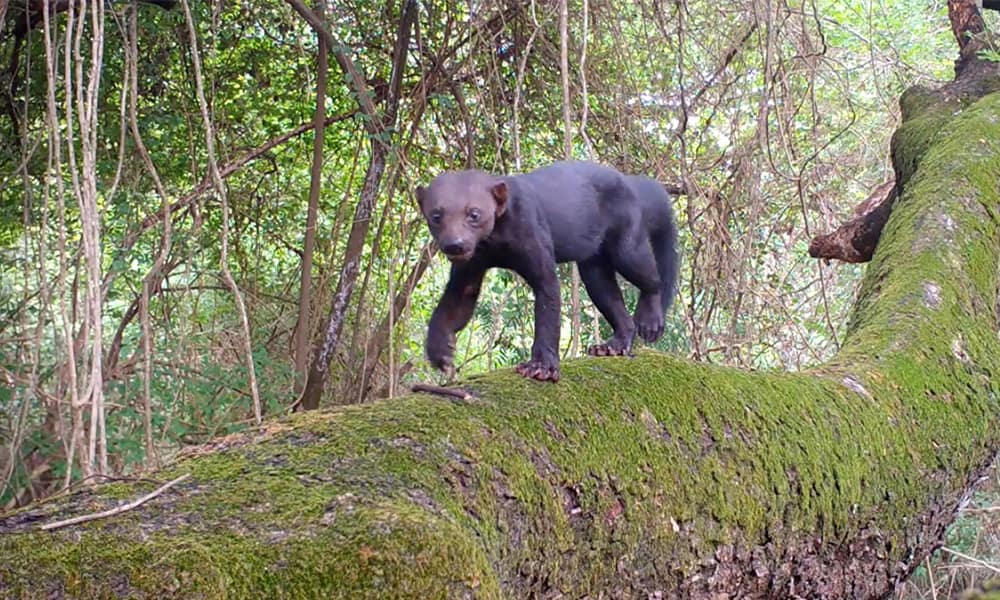If you’ve met a ferret then you have a good baseline for understanding what a tayra is. In short, it’s a big black weasel with a bushy tail. The tayra, or tolomuco in Spanish, is a two-foot long, 10-pound member of the weasel family.
Tayras range from Mexico down to Argentina. In some parts of their range, tayras have black bodies and a completely blond head and neck. It’s worth googling. They’re awesome looking. In Costa Rica, they trade in their blond heads for an all-black uniform. Sometimes they keep a little of the blond as a patch on their throat, or less commonly, a blond patch on the back of their neck.
Much like the pet ferrets that I’ve encountered in my life, tayras have a high metabolism, meaning they’re about as hyper as my 5-year-old son. They have large home ranges, between 2,000 and 5,000 acres, and they spend their days aggressively patrolling them for food. Radio-colored tayras have been recorded covering over four miles a day. Not bad for a ten-pound critter.
All of my tayra experiences point to these animals having a non-stop motor. I worked with a male that had been raised by hand and couldn’t be released from a wildlife rehabilitation center where I used to work.
He spent his days constantly patrolling his large enclosure. The tayras I’ve seen in the wild have been 4-second sightings, either darting across a road, shooting up a tree or sprinting across a forested path. As for my camera traps, tayra videos are reliably short. They’ll often take a second to inspect the camera and then quickly move on.
Tayras are diurnal, doing most of their running around during the day. Almost all of this daytime activity is related to finding a meal. They are omnivorous, eating a wide variety of items from fruit to rodents to bird eggs to pit vipers.
They find some of that food while patrolling the forest floor, but they’re also perfectly capable of climbing extremely high into the largest trees to find a meal. The male from the rescue center loved bananas, papaya, and beef. He’d also happily eat any small mammal that made the poor choice of entering his enclosure to try to eat his leftovers.
Tayras range throughout almost all of Costa Rica, and if you spend a lot of time outdoors, you have a pretty good chance of spotting one. Even though their diurnal lifestyle makes them fairly easy to see, they have not been studied extensively in the wild.
Tayras are one of my favorite Tico mammals, and I’m always pumped to record them on my camera traps. Take a look at the video below and learn to love this big black weasel as much as I do.
Vincent Losasso, founder of Guanacaste Wildlife Monitoring, is a biologist who works with camera traps throughout Costa Rica. Learn more about his projects at: Instagram and facebook or by email.

